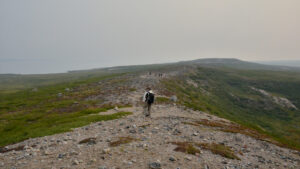Physical Address
23,24,25 & 26, 2nd Floor, Software Technology Park India, Opp: Garware Stadium,MIDC, Chikalthana, Aurangabad, Maharashtra – 431001 India
Physical Address
23,24,25 & 26, 2nd Floor, Software Technology Park India, Opp: Garware Stadium,MIDC, Chikalthana, Aurangabad, Maharashtra – 431001 India

CLAIM
Global warming is making the Arctic green which is good news.
FACT
The Arctic turning green because of global warming is not good news. The Arctic is one place on the Earth that we don’t want to turn green.
WHAT THEY SAY
The fact that the Arctic is turning green because of global warming is being used by many to claim that global warming is not a bad thing after all. They are claiming that climate change is nothing but natural and it is in fact helping parts of the Earth to turn greener with increased levels of carbon dioxide gas in the atmosphere.
Some others suggest that the greening of the Arctic will counteract climate change since plants take up carbon dioxide as they grow. They believe that rising temperatures will lead to Arctic vegetation absorbing more carbon dioxide from the atmosphere and thus reduce the GHGs that are causing global warming. We came across one such tweet among many that signifies that the arctic turning green because of global warming is actually good news.
WHAT WE FOUND
While it is true that global warming is making the Arctic green, the reality is far more complicated than that. The Arctic is actually one place on the Earth that we don’t want to turn green which means that the Arctic turning green because of global warming cannot be a good thing.
Is the Arctic really turning green and why?
The Arctic has become greener as warmer air and soil temperatures lead to increased plant growth. NASA says that the Arctic greening trend can be mainly attributed to ‘anthropogenic forcings, particularly to rising atmospheric concentrations of greenhouse gases’.
According to a study published in Nature Communications, the greening of the Arctic is quite evident. The study measured vegetation changes in the entire Arctic using satellite data from Landsat, a joint mission of NASA and the U.S. Geological Survey (USGS).
The researchers used the Landsat data and additional calculations to estimate the peak greenness for a given year for each of the 50,000 randomly selected sites across the tundra. Around 38% of the tundra sites across Alaska, Canada, and western Eurasia showed greening and only 3% showed the opposite browning effect between 1985 and 2016.
“The Arctic tundra is one of the coldest biomes on Earth, and it’s also one of the most rapidly warming,” said Logan Berner, a global change ecologist, who led the research. “This Arctic greening we see is really a bellwether of global climatic change – it’s a biome-scale response to rising air temperatures.”
The researchers concluded that the greening of the Arctic is being witnessed at the same time and over the same period as rapid increases in summer air temperatures are being recorded. They also found that the greening patterns with other factors are associated with higher soil temperatures and higher soil moisture.
Why is it bad news?
The most popular belief or claim regarding Arctic greening is that it will lead to the absorbance of more carbon dioxide from the atmosphere reducing GHGs that are causing global warming. Scientists have however found through a study that even though the greening of the Arctic was evident, the overall carbon dioxide uptake either did not significantly increase or had only minor increases.
In addition to that, the fact that Arctic plants currently have only about three months to grow and reproduce before it gets too cold seemed to be another piece of bad news. ‘The Arctic’s dominant shrubs, sedges and other wetland plants were no longer sequestering more carbon late in the season,’ Donatella Zona, the lead author of the study said. ‘If tundra ecosystems are not able to continue taking up carbon dioxide later in the season, the expected increase in plants sequestering carbon may not materialize’.
There is also another issue with the snow melting earlier in the season which leads to plants decomposing earlier in the Arctic impacting its purpose as a vast carbon sink.
‘Normally, plants on the tundra store more carbon through photosynthesis than the tundra releases, making it a vast carbon sink. The long, cold winters slow plants’ decomposition and lock them in the frozen ground. However, when permafrost holding this and other organic matter thaws, it releases more greenhouse gases into the atmosphere,’ Donatella noted.
Accelerating the thaw of permafrost
Thawing permafrost is one of the most serious side effects of a warming climate. Permafrost holds thousands of years of accumulated carbon in the form of plant material in frozen form. According to a paper based on a study on Arctic greening published in Nature Climate Change, taller native species like shrubs are becoming more abundant in the Arctic with increased warming which might be influencing the way the tundra plants protect the frozen soils and carbon below. The researchers found that the taller shrub canopies trap more snow acting as an insulating layer preventing the cold from penetrating the soil thus accelerating the thawing of permafrost. Also, the taller shrubs tend to act like a darker cover than snow from above absorbing more heat and further accelerating permafrost melting, the study further found.